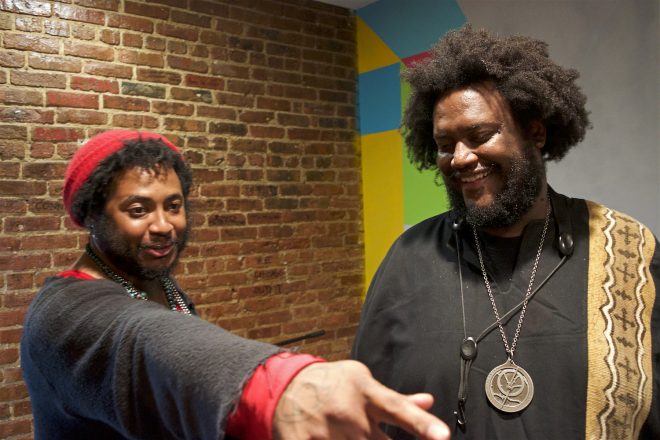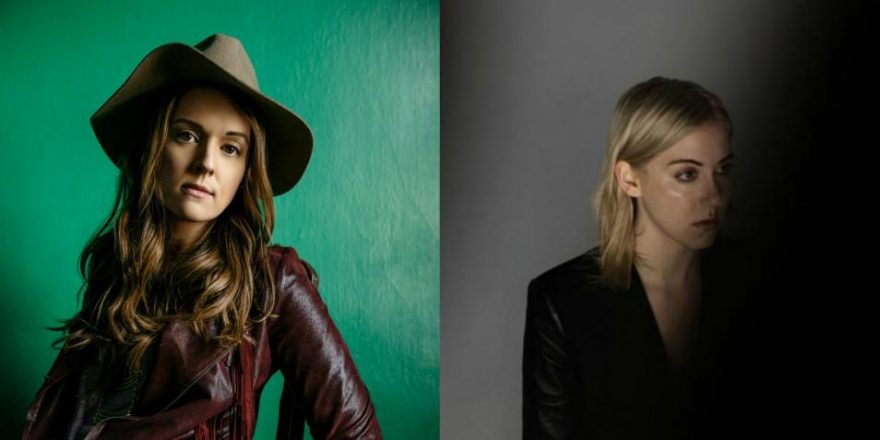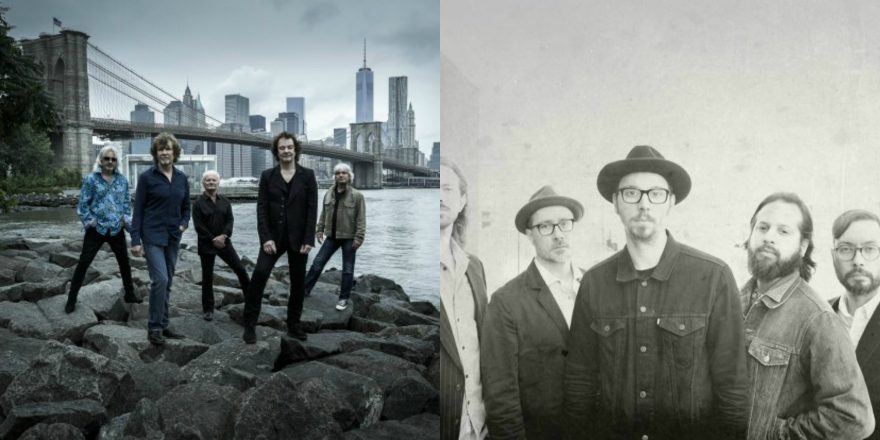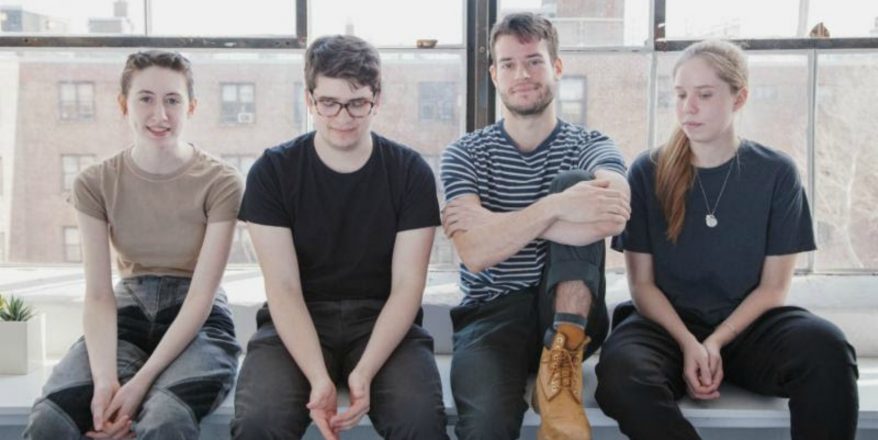“O cuando sere? Un dia sere.”
— The Beach Boys, “I Just Wasn’t Made for These Times,” Pet Sounds
—————————————–
“Two girls for every boy.”
— Jan and Dean, “Surf City,” Surf City and Other Swingin’ Cities
That vocal hook was my introduction to Brian Wilson. I heard it on a TV commercial selling a compilation of ’60s hits when I was a kid. I couldn’t get the sound out of my head. I didn’t understand how it worked; it seemed like the notes were wrong, but that melody was magnetic. Of course, “Surf City” was released by Jan and Dean and not the Beach Boys, and I had no idea who Brian Wilson was, let alone that he co-wrote the track. Songwriting credits weren’t a big deal to me at age five.
I finally heard about Brian Wilson and Pet Sounds from an Irish teenager named Tim Wheeler. His band Ash released their debut LP 1977 in 1996 and I was obsessed with it. Tim was dropping Brian’s name in interviews as a primary influence on his songwriting, which was all the recommendation I needed to seek out a copy of Pet Sounds. A high school classmate named Al dubbed a copy on cassette and I entered the world of Brian Wilson. I still have the cassette. For whatever reason, it plays slightly fast, which made figuring out the chords basically impossible — not that I, at thirteen, had the faculty to play the kinds of chords that Brian was using.
I did figure some of them out, though, and I listened over and over and over again. That’s always been my way: to listen deeply as opposed to widely. That’s what Brian was doing with Pet Sounds: creating work that was instant, but also vital, expansive. To say the record entered my lexicon is an understatement; it restructured my DNA. So when the final Pet Sounds tour was announced in late January 2016, I bought a meet and greet ticket for the September 30 show at the Fox Theatre in Detroit, Michigan, without hesitation.
As it turned out, a vacation I planned with my best friend and her two children lined up perfectly with the Canadian dates in July, and I was also able to catch the tour in both Ottawa and Toronto. The Ottawa show was a last-minute decision; we ran from the hotel to the Ottawa Jazz Fest, arriving just as the band opened with “Our Prayer.” Sunday night at an outdoor festival was ideal for the greatest hits that opened the set. After eleven songs, Brian introduced Pet Sounds, and the audience went bananas for the opening notes of “Wouldn’t It Be Nice.” They settled quickly. With the lull between hits (“Sloop John B” and “God Only Knows”) and the complexity of the Pet Sounds material, the success of Mike Love’s “don’t fuck with the formula” version of the Beach Boys became obvious. Depressing, but obvious.
That night, the Pet Sounds material received standing ovations after almost every track.
The next night at Massey Hall was much different. The fact that it was a Brian Wilson concert versus Brian Wilson at a festival upped the anticipation considerably. Before the show, Brian was visible through the side stage door. A man seated close to me flailed wildly and flashed peace signs in his direction for twenty minutes. Brian did not return the gestures. That night, the Pet Sounds material received standing ovations after almost every track. Each time, Brian repeated a plea: “Please be seated.”
—-
I landed in Detroit in the early afternoon of the thirtieth. My Uber driver assured me that the night would be special simply based on the venue. He was not wrong; the Fox is ornate, regal.
Part of the meet-and-greet included access to the sound check, and as we waited to be taken into the theater I took stock of the hundred or so other attendees: at thirty-three, I was one of the youngest people there. There was nervous and stilted chatter to fill the time.
Finally, the doors opened.
The band, minus Brian, was running through a jokey version of “Here Today.” “Johnny B. Goode” was up next; Brian wanted to play the song in Chicago, and after some discussion about which key it should be played in (they settled on A), the band ran through the song. They finished, and Brian entered from stage left to no fanfare. He settled at his piano and then told the band they played it too fast. He counted out a new, slower tempo. The band laughed a bit at the reduced rhythm (“That’s Coffee Bean slow!”), but they played the song again and it worked. The band played two more songs with Brian before he left the stage. His comments to the band were brief, incisive and unquestioned — not as energetic as the Pet Sounds session tapes show, but just as perceptive.
Part two was the meet-and-greet. We lined up down the side of the theater, which allowed us to hear the band working on harmonies around the piano. The promoters told us we would be entering the backstage in groups; because I had traveled alone, I constituted a group in the eyes of the Fox Theatre staff. As I waited my turn, I could see and hear the group ahead of me: everyone was lively, with Brian saying, “Let’s take a picture! Let’s take a picture!” Finally, it was my turn. I entered the room by myself, chest pounding. I had Brian sign my mono copy of Pet Sounds. A gruff man took two quick pictures with my iPhone.
His eyes were remarkably kind, almost alarmingly so.
I told the group — Brian, Al Jardine and Blondie Chaplin — that I had travelled from Nova Scotia and that it was the third time I had seen them on this tour. “Nova Scotia!” Al said. Brian looked at me and repeated himself in the way he so often does: “Thank you! Thank you!” His eyes were remarkably kind, almost alarmingly so; I told him that I appreciated all of the music.
The gruff photographer told me it was time to go.

It was a brief and monumental moment that will be burned in my brain for the rest of my life.
There were two hours to kill between the meet-and-greet and the show. While I was standing outside the Fox, a woman stopped and looked at the digital marquee advertising the show. She asked me if I was Brian Wilson.
“No,” I said.
—-
I had a friend tell me once that it was easy to be a lazy Beach Boys fan, meaning that you could champion Pet Sounds and ignore everything that came before and after it. He was right, and I was that lazy Beach Boys fan for a few years, looking down my nose at the car/surf/girl songs that came before and staying willfully ignorant about the missteps and victories that followed. I would not recommend that narrow view; you just miss too much great music.
The show started shortly after eight. Brian entered from stage left with a small wave, and he and his band played a mix of singles and album tracks that spanned his various periods with the Beach Boys. Two things became evident: first: the “simple” songs are not even remotely simple — the eleven members of the band were all engaged for each song, with most adding complicated vocal parts multiple times throughout. Second: the arrangements are sui generis. It’s an easy thing to say about the man, but the complexity and emotional impact of the music was almost overwhelming from the second row; I had tears in my eyes at multiple points during the opening set (in songs I liked but had not previously connected with — the opening of “California Girls,” the outro of “Sail On, Sailor”).
There was a short break, and then it was time for Pet Sounds. Brian introduced the album and started off by leading a crowd sing-along of “Row, Row, Row Your Boat.” “Wouldn’t It Be Nice” was next, and in that one song I could hear so many echoes of what I’ve been chasing as a songwriter: big, dynamic major chords supporting sad lyrics; an inherent sense of longing; layers upon layers of sounds; propulsive rhythms pushing everything forward. At various points on the tour, Brian has been apologetically explaining to the audience that the record isn’t “rock & roll,” but live in Detroit, “Wouldn’t It Be Nice” suggested otherwise.
Brian walked off the minute he was free, to what seemed like unending applause.
Brian introduced many of the songs with short, factual statements that got big laughs out of the crowd. He sang the majority of the lead vocals; Matt Jardine (Al’s son) handled Brian’s falsetto parts with uncanny likeness. “Don’t Talk (Put Your Head on My Shoulder)” was sparse and preemptively elegiac — a sequence of chords that have no business being in the same song end up a dark and romantic masterpiece. “God Only Knows” swirled through the room and received a standing ovation, and as in Toronto, Brian asked us to be seated. “Caroline, No,” a devastating song, ended the set, and Brian walked off the minute he was free, to what seemed like unending applause.
How he returned bears emphasizing. The band was introduced individually by Paul Von Mertens, and toward the end of the roll call was original Beach Boy Al Jardine. Brian, knowing he was next, walked out as soon as Jardine’s name was announced, leaving no chance for Von Mertens to fête him. It was a dissonant moment. Popular music is inherently narcissistic; the theater was full because of Brian Wilson, and his self-negation on a night (and tour) that celebrated his highest achievement was entirely endearing.
The dissonance was present throughout the evening. Brian Wilson is not an entertainer in the modern sense; there are videos of him at the height of Eugene Landy’s influence, clad in leather trousers, attempting to be a front man. Those videos are uncomfortable to watch. In Detroit, seated in a beautiful theater, the entertainment was not just Brian Wilson the person, but Brian Wilson the songs, the work. He sang confidently for much of the set, but looked most content when he was singing backup or playing the piano, his band mates filling out his songs. It reminded me of how he gave Carl the lead on “God Only Knows” in 1966, despite knowing it was going to be a hit. He was a great singer in his own right, but knew Carl was better for the track; he served the song, not himself. Pet Sounds is many things, but what became palpable that night in Detroit was both Brian Wilson’s mastery of and surrender to musical transcendence. That was an important reminder.
The encore began with “Good Vibrations,” which offered up the best stage banter of the night. “Did you come here for bad vibrations? Did you come here for shitty vibrations? Did you come here for so-so vibrations? No! You came here for…” The rest of the encore was devoted to car and surf songs, with the exception of the standard closer, “Love and Mercy.” There was another ovation, and we spilled out onto Woodward Avenue.
—-
So: how do you write about Brian Wilson in 2016? I don’t fetishize the ’60s. I don’t fetishize Brian’s mental illness, or the abuse his father laid upon him, or his cousin’s gaudy rings and how they so neatly contrast with the experimentation and art of SMiLE. I’ve read a few books about him, and his excellent autobiography was released on my thirty-fourth birthday, and I have read that as well, having pre-ordered it months ago.
Ultimately, what I am left with is my experience and connection with his songs: at the Fox Theatre, at the Ottawa Jazz Fest, driving in my car, singing with my best friend’s kids, and listening to a cassette that plays at the wrong speed. That experience is so personal that communicating it is a Sisyphean task. Sometimes I think about the plainly stated lyrics and the importance of being honest in your art. His dedication to getting the production right is a constant motivator and inspiration on my own records.
Sometimes I ruminate on why his songwriting resonates with me and study the work academically, just like he did with the songs of the Four Freshman; I did steal one of the Pet Sounds moves for the new Kestrels record on a song called “Ace,” modulating the outro by a minor third during the guitar solo. But mostly, I put his music on and go away for a while, which is what I think he would want.








